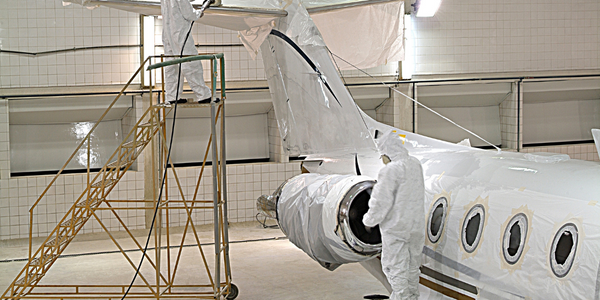Technology Category
- Application Infrastructure & Middleware - Event-Driven Application
- Networks & Connectivity - 5G
Applicable Industries
- Aerospace
- Cement
Applicable Functions
- Human Resources
- Logistics & Transportation
Use Cases
- Leasing Finance Automation
- Material Handling Automation
Services
- Training
About The Customer
Virgin Australia is the second largest airline in Australia, with an expansive flight network that provides access to both domestic and international destinations, directly or with airline partners. The company has a large and mobile workforce, including 3,000 cabin crew members and 1,100 pilots and flight crew. The airline industry is characterized by significant compliance requirements, and Virgin Australia is no exception. The company manages a large amount of forms and has a workforce that is often remote or in constant motion. Virgin Australia's Workflow Automation Team Lead, Mark Bardsley, is responsible for ensuring that the company’s automation solutions are efficient and effective.
The Challenge
Virgin Australia, the second largest airline in Australia, faced a significant challenge in managing its large and mobile workforce. The airline industry is characterized by significant compliance requirements, a massive amount of forms, and a large workforce that is often remote or in constant motion. Virgin Australia's workforce, which included 3,000 cabin crew members and 1,100 pilots and flight crew, needed to submit safety reports, leave requests, check flight status, and complete various other tasks on a daily basis. The data collection required manual processing across multiple teams, which was time-consuming and inefficient. The challenge was to find a solution that could automate these processes, reduce the workload on HR staff, and provide cost-effective access to data and systems.
The Solution
To address these challenges, Virgin Australia implemented an automated forms and workflow solution using the Nintex Process Platform. The solution replaced manual data entry and processing with online forms that delivered data in a fixed format, eliminating the need for manual data processing. The platform allowed multiple teams to build and manage their own automation requirements. Nintex became Virgin Australia’s global repository to access and manage all workflows. Administrators could manage who they let in to create workflows and what level of access they gave to that person to build or create their own connectors. The IT team could provide governance and oversight to new systems and processes before they became operational. Virgin Australia also used Nintex Process Manager to centralize and provide visibility of their processes across the organization. The Nintex workflow tools were agile and responsive, allowing Virgin Australia to quickly demo and create proof of concepts.
Operational Impact
Quantitative Benefit

Case Study missing?
Start adding your own!
Register with your work email and create a new case study profile for your business.
Related Case Studies.

Case Study
System 800xA at Indian Cement Plants
Chettinad Cement recognized that further efficiencies could be achieved in its cement manufacturing process. It looked to investing in comprehensive operational and control technologies to manage and derive productivity and energy efficiency gains from the assets on Line 2, their second plant in India.

Case Study
Airbus Soars with Wearable Technology
Building an Airbus aircraft involves complex manufacturing processes consisting of thousands of moving parts. Speed and accuracy are critical to business and competitive advantage. Improvements in both would have high impact on Airbus’ bottom line. Airbus wanted to help operators reduce the complexity of assembling cabin seats and decrease the time required to complete this task.

Case Study
Aircraft Predictive Maintenance and Workflow Optimization
First, aircraft manufacturer have trouble monitoring the health of aircraft systems with health prognostics and deliver predictive maintenance insights. Second, aircraft manufacturer wants a solution that can provide an in-context advisory and align job assignments to match technician experience and expertise.

Case Study
Aerospace & Defense Case Study Airbus
For the development of its new wide-body aircraft, Airbus needed to ensure quality and consistency across all internal and external stakeholders. Airbus had many challenges including a very aggressive development schedule and the need to ramp up production quickly to satisfy their delivery commitments. The lack of communication extended design time and introduced errors that drove up costs.

Case Study
Accelerate Production for Spirit AeroSystems
The manufacture and assembly of massive fuselage assemblies and other large structures generates a river of data. In fact, the bill of materials for a single fuselage alone can be millions of rows of data. In-house production processes and testing, as well as other manufacturers and customers created data flows that overwhelmed previous processes and information systems. Spirit’s customer base had grown substantially since their 2005 divestiture from Boeing, resulting in a $41 billion backlog of orders to fill. To address this backlog, meet increased customer demands and minimize additional capital investment, the company needed a way to improve throughput in the existing operational footprint. Spirit had a requirement from customers to increase fuselage production by 30%. To accomplish this goal, Spirit needed real-time information on its value chain and workflow. However, the two terabytes of data being pulled from their SAP ECC was unmanageable and overloaded their business warehouse. It had become time-consuming and difficult to pull aggregate data, disaggregate it for the needed information and then reassemble to create a report. During the 6-8 hours it took to build a report, another work shift (they run three per day) would have already taken place, thus the report content was out-of-date before it was ever delivered. As a result, supervisors often had to rely on manual efforts to provide charts, reports and analysis.








